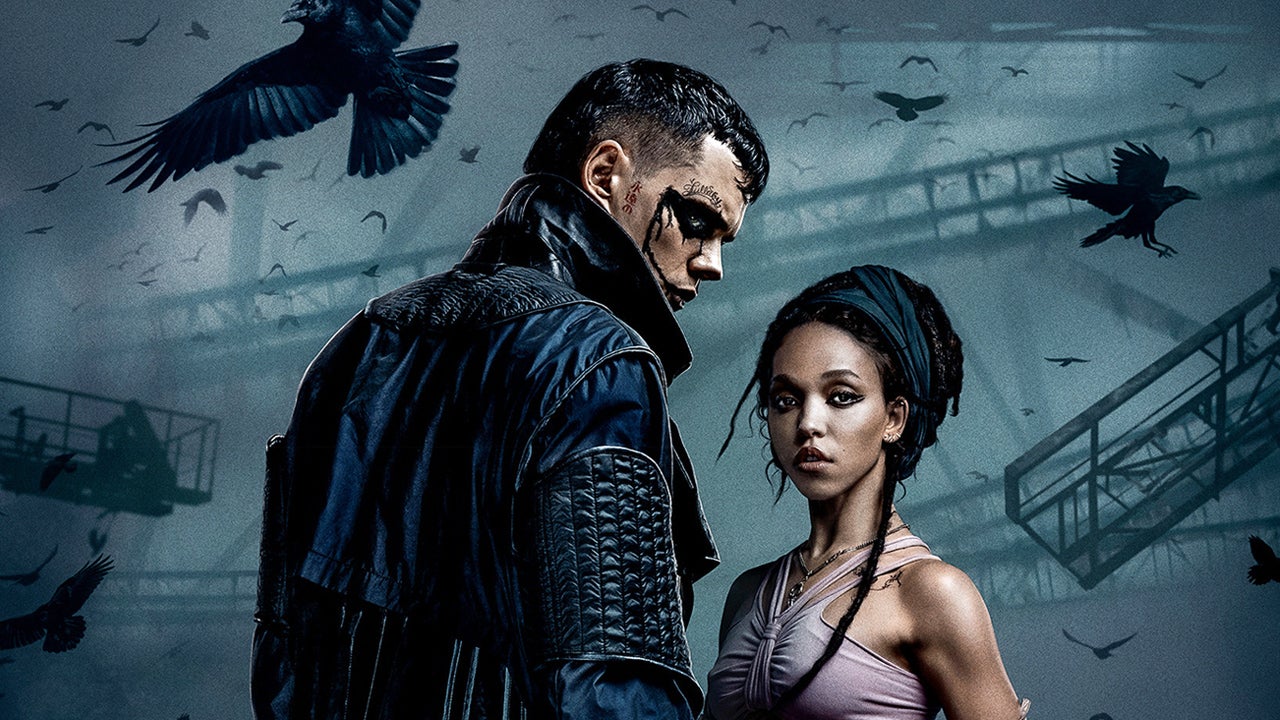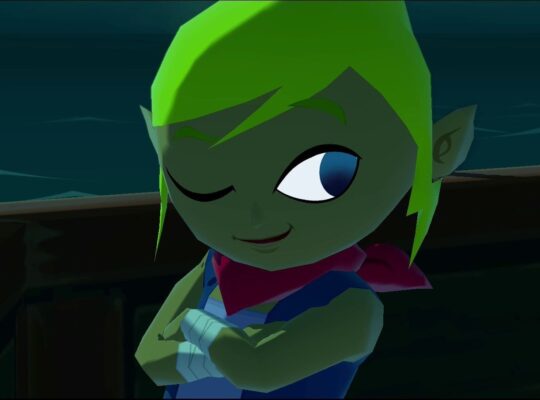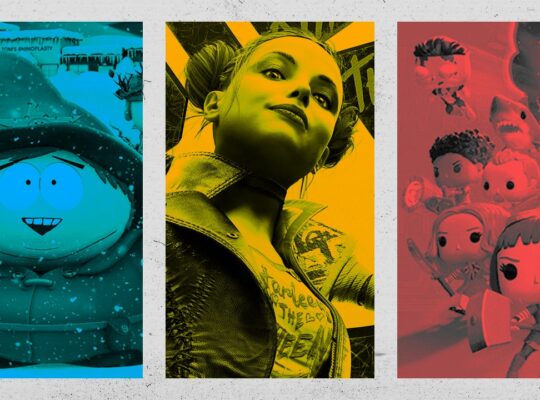Few box-office sensations are as intrinsically of their own moment as The Crow, the baroque lullaby of beyond-the-grave retribution that swooped into theaters on a tailwind of tragedy in the summer of 1994. Brandon Lee, the film’s 28-year-old star (and the son of martial-arts legend Bruce Lee), was killed on set in a freak accident involving a prop gun. The dark truth is that his death lent the whole movie a chill of morbid, art-imitating-life gravitas. You weren’t just watching an actor play a superhero rising from the dirt to avenge his true love. You were seeing, in a sense, the ghost of that actor, conjured on screen via a posthumous performance that blurred the line between real and fictional loss.
Thankfully for all involved, no grave misfortune hangs over the reboot of The Crow, whose behind-the-scenes troubles were more mundane – a string of exiting stars and creative teams that kept it in development hell for years. Of course, it was more than just the ghoulish fascination of Lee’s presence that made the original a hit. That film was a junky runway show of a comic-book fantasia that got by on style and attitude and fashion sense, on the way it synthesized its goth influences into a highly marketable brand. This new Crow never tries to party like it’s 1994, which is both a relief and one reason it’s destined to become a footnote. Watching it, you’re more aware than ever of how inextricable The Crow is from his Gen X genesis.
Directed by Rupert Sanders, whose Ghost in the Shell remake brought another ’90s touchstone into the 21st century, the film loosely adapts the same James O’Barr comic book about a slain man who returns to life, mystical bird in tow, to hunt down the gang that killed him and his fiancé. But Sanders doesn’t try to rebuild the perennially burning hellhole Detroit where Alex Proyas set the original. If that take on The Crow was clearly made in the shadow of Tim Burton’s Batman and Batman Returns, this 20-years-later version is more indebted to Christopher Nolan’s take on the Caped Crusader, trading bold flamboyance for a glumly “realistic” vision of a creature of the night. (We even get a shot of his winged friends circling him in a Batman Begins-esque cyclone of rebirth.)
Gently tortured Eric (Bill Skarsgård, plastering on clown makeup again after his tenure as Pennywise) and endangered Shelly (pop star FKA Twigs) meet cute in a prison-like rehab facility, before flying the coop and building a life together. Unfortunately, Shelly’s past catches up with them, and the two are murdered in their love nest. (Only murdered; it’s another sign of the changing times that this Crow excises the first half of the rape-revenge formula the original flippantly exploited.) The smartest choice in the script by William Schneider and King Richard screenwriter Zach Baylin is to devote some screen time to the romance at the center of story, as opposed to relegating it to snazzy flashbacks. But the relationship never develops beyond fashion-spread canoodling. This is not exactly a love story for the ages, and so Eric’s subsequent rampage fails to accrue the operatic heartache it desperately demands.
Between bouts of gunplay, Eric returns to a limbo afterlife that resembles the foggy, marshy underpass of a bridge. “You’d think they’d come up with something better” quips our hero’s helpful spirit guide (Sami Bouajila). This patron saint of exposition isn’t kidding: You’ll miss the gaudy visual imagination Proyas brought to this pulp material. The plot, tweaked for a new generation of mascara-wearing goth kids, is like something out of a My Chemical Romance concept record, with Eric agreeing to hunt down his beloved’s killer – a literal servant of Satan who condemns innocent souls to Hell in exchange for immortality – to free Shelly from the underworld. That’s an agreeably over-the-top direction for The Crow to take, but like almost everything else in the movie, it feels half-baked, even with Danny Huston as the John Wick-esque aristocrat villain, whispering unholy suicide hexes into the ears of his victims.
Why can’t The Crow escape Brandon Lee’s shadow?
The specific problem here is the Eric Draven character is so completely intertwined with one actor, not simply because of how good they were in the role but because of the uniquely dark and sad scenario that occurred around them playing that role. It’s only natural for fans to elevate this character and be extra protective of any attempt to replicate what we saw in 1994. So why burden yourself with that? Just make a new Crow movie about a different person! If you want, you can do the requel approach and, say, bring back Ernie Hudson to connect it to the original a bit. Or it can 100% stand on its own with new characters in a new setting. But once you say “This is the new Eric Draven,” it’s going to be incredibly difficult for people to accept, even with a strong performer like Bill Skarsgard in the role. – Eric Goldman
Read the rest of The Problem With The Crow Remake.
Once more planting his freak flag at the intersection of hunky and creepy, Skarsgård is about as close to perfect casting as you’re going to get for a 2024 version of The Crow. He’s like some unholy love child of James Dean and Peter Lorre – the perfect combination for a sensitive artist twisted into an angel of death. And if Skarsgård doesn’t quite escape Lee’s shadow (how could he?), he looks great with tattoos, black eyeliner, and a sword swung over one shoulder. In its best moments, like a slow-motion saunter to “Total Depravity” by The Veils (a fine modern correlative to The Cure, whose goth grandeur both inspired and soundtracked the original), this Crow feigns towards its own brand of rock-star cool. And cool is about all that matters with this character.
This new Crow never tries to party like it’s 1994, which is both a relief and one reason it’s destined to become a footnote.
But even at under two hours, the movie drags. It’s paced more like a season of a Netflix show, the kind where Surf Dracula only gets his board in the final episode. Where once The Crow clawed his way immediately out of the soil, down to violently clown in act 1, here he spends most of the runtime preparing to become The Crow. The payoff is fun enough: We get one splattery kill spree through a concert lobby, Sanders cutting between Skarsgård’s digitally bloody warpath and a soprano belting. But the sequence’s late arrival throws into sharp relief how little the film has been delivering up until then, how much it’s deprived us of the adrenaline rush of its MTV-meets-kung-fu predecessor.
The Crow is not the misbegotten disaster its troubled road to release suggests. Here and there, it achieves a measure of moody appeal, a whisper of style. And it never stoops to the craven business of simply tracing over the 1994 version, of winking to the goth multiplex milestone you already know and love. But seeing this material taken out of its original context – stripped of another era’s idea of graphic-novel and music-video chic – really underscores how much those Hot Topic elements are The Crow. Without them, you’re just watching another generic vengeful-vigilante pastiche, doomed to be forgotten after the last flutter of eyelashes and black wings. “Do you think angsty teens would build shrines to us?” Shelly asks as the two lovers jokingly contemplate a plunge into icy water. But those shrines have already been built, consecrated, and worshiped by multiple generations of surly outcasts who won’t give this version of Eric and Shelly’s tragic tale a second thought.












